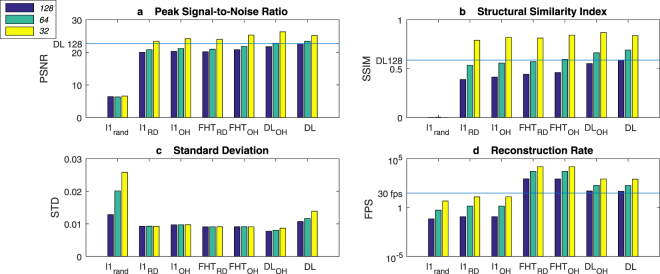Figure 4.
Quantitative assessment of the reconstruction performance. Four different metrics have been used to assess the reconstruction performance (PSNR, peak signal-to-noise ratio (a), SSIM, structural similarity index (b), STD, standard deviation (c) and reconstruction rate (d)) using different reconstruction methods: compressive sensing l1 minimisation using a pseudo-random basis (l1rand), a Russian-Doll ordered Hadamard basis (l1RD), an optimised order of the Hadamard basis (l1OH); by performing a Fast Hadamard Transform when using the Russian-Doll ordered Hadamard basis (FHTRD), the optimised order of the Hadamard basis (FHTOH); as well as the novel methods proposed here employing deep learning (DLOH and DL). In each case the three shaded bars depict different reconstruction resolutions 128 × 128 first column, 64 × 64 second column and 32 × 32 third column. In summary, we find that deep learning offers the best reconstruction quality, with an increase in the standard deviation at video rates.

